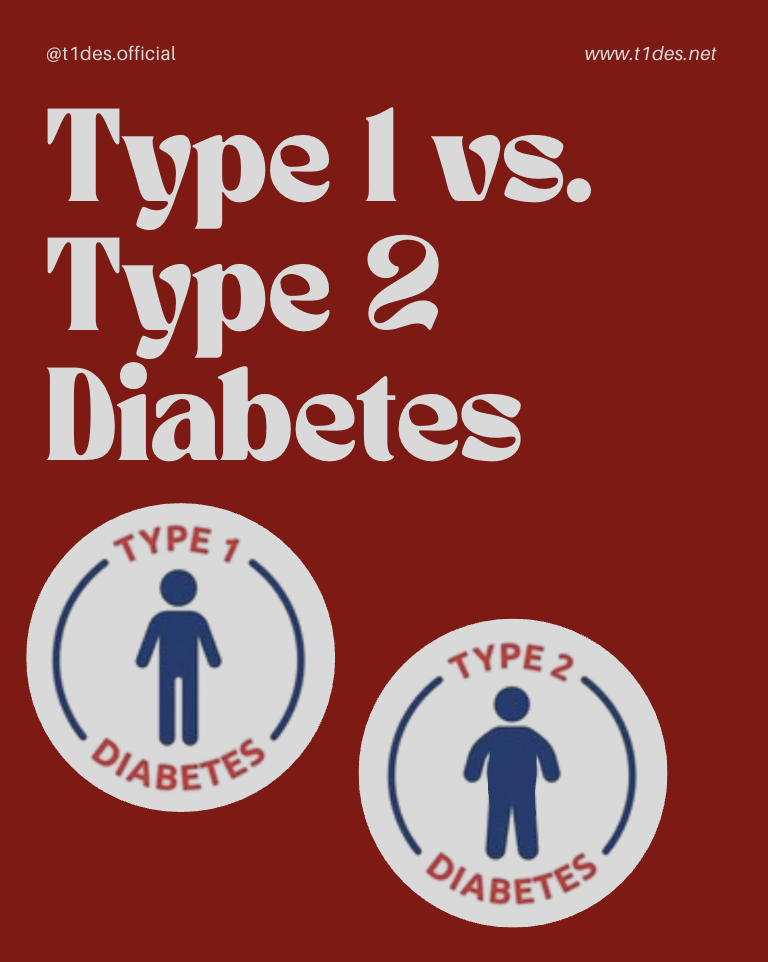At first glance, type 1 and type 2 diabetes might seem like similar conditions–they both involve high blood sugar and require careful management. However, they are distinct diseases with different causes, biological processes, and treatments. Understanding these key differences is essential for raising awareness, improving care, and supporting individuals living with either condition.
Causes: Autoimmune vs. Metabolic
Type 1 diabetes (T1D) is an autoimmune disease that accounts for about 5-10% of all diabetes cases. The immune system mistakenly attacks and destroys the insulin-producing beta cells in the pancreas. This process usually begins in childhood or adolescence, but can occur at any age. The cause isn’t lifestyle-related; in fact, it’s linked to a combination of genetics and environmental triggers, though the exact trigger remains unknown.
On the other hand, type 2 diabetes (T2D) makes up 90-95% of all diabetes cases and is primarily a metabolic disorder. It develops when the body becomes resistant to insulin or when the pancreas can’t keep up with the body’s increasing demand for insulin over time. T2D is strongly linked to genetics, age, obesity, physical inactivity, and other lifestyle factors. It’s more common in adults, but is increasingly being diagnosed in children and teens as well due to rising obesity and inactivity rates.
Pancreatic processes
In T1D, the immune system’s attack wipes out most or all of the pancreas’s ability to produce insulin. Without insulin, glucose can’t enter cells, causing blood sugar to rise dangerously high. Glucagon, another hormone made by the pancreas that prevents low blood sugar, is also disrupted in T1D, making patients more prone to hypoglycemia.
In T2D, the pancreas still produces insulin, but the body’s cells are unable to respond to it properly. Over time, beta cells become overworn, and insulin production may decline. Glucagon levels may also become dysregulated, but the process is slower than in T1D.
Insulin and Treatment
Because people with type 1 diabetes produce little to no insulin, they must take insulin every day through injections or an insulin pump. As of 2025, there is no cure, and lifestyle changes alone cannot manage the condition.
People with type 2 diabetes may initially manage their condition with oral medications, changes in diet and exercise, and blood sugar monitoring. Over time, they may also need insulin if their pancreas can no longer produce enough insulin on its own. Unlike T1D, type 2 diabetes can sometimes be reversed or put into remission, especially with early intervention.
Both type 1 and type 2 diabetes are serious conditions, but it is important to recognize that they are not the same disease. Understanding their differences is essential not only for proper diagnosis and treatment but also for fighting stigma and misinformation. Whether you’re newly diagnosed, supporting a loved one, or are just trying to learn more, recognizing how these two types of diabetes differ can help us all better support the millions of people affected by them.
Sources
CDC. “Diabetes Basics.” Www.cdc.gov, 15 May 2024, www.cdc.gov/diabetes/about/index.html.
Cleveland Clinic. “What’s the Difference between Type 1 and Type 2 Diabetes?” Cleveland Clinic, Cleveland Clinic, 29 Feb. 2024, health.clevelandclinic.org/type-1-vs-type-2-diabetes.
Diabetes UK. “Differences between Type 1 and Type 2 Diabetes.” Diabetes UK, 2024, www.diabetes.org.uk/diabetes-the-basics/differences-between-type-1-and-type-2-diabetes.

Leave a Reply